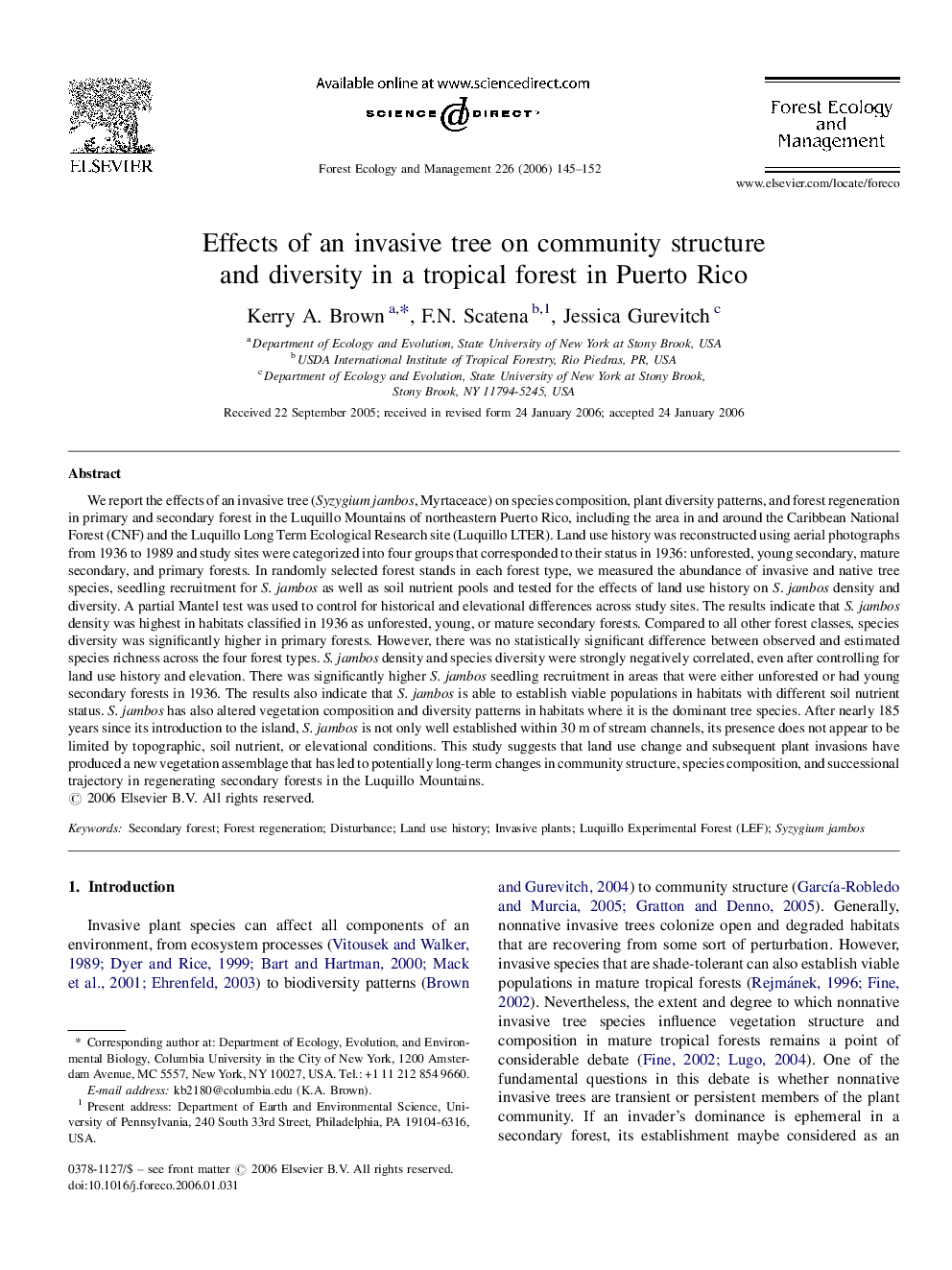| کد مقاله | کد نشریه | سال انتشار | مقاله انگلیسی | نسخه تمام متن |
|---|---|---|---|---|
| 90513 | 159386 | 2006 | 8 صفحه PDF | دانلود رایگان |

We report the effects of an invasive tree (Syzygium jambos, Myrtaceace) on species composition, plant diversity patterns, and forest regeneration in primary and secondary forest in the Luquillo Mountains of northeastern Puerto Rico, including the area in and around the Caribbean National Forest (CNF) and the Luquillo Long Term Ecological Research site (Luquillo LTER). Land use history was reconstructed using aerial photographs from 1936 to 1989 and study sites were categorized into four groups that corresponded to their status in 1936: unforested, young secondary, mature secondary, and primary forests. In randomly selected forest stands in each forest type, we measured the abundance of invasive and native tree species, seedling recruitment for S. jambos as well as soil nutrient pools and tested for the effects of land use history on S. jambos density and diversity. A partial Mantel test was used to control for historical and elevational differences across study sites. The results indicate that S. jambos density was highest in habitats classified in 1936 as unforested, young, or mature secondary forests. Compared to all other forest classes, species diversity was significantly higher in primary forests. However, there was no statistically significant difference between observed and estimated species richness across the four forest types. S. jambos density and species diversity were strongly negatively correlated, even after controlling for land use history and elevation. There was significantly higher S. jambos seedling recruitment in areas that were either unforested or had young secondary forests in 1936. The results also indicate that S. jambos is able to establish viable populations in habitats with different soil nutrient status. S. jambos has also altered vegetation composition and diversity patterns in habitats where it is the dominant tree species. After nearly 185 years since its introduction to the island, S. jambos is not only well established within 30 m of stream channels, its presence does not appear to be limited by topographic, soil nutrient, or elevational conditions. This study suggests that land use change and subsequent plant invasions have produced a new vegetation assemblage that has led to potentially long-term changes in community structure, species composition, and successional trajectory in regenerating secondary forests in the Luquillo Mountains.
Journal: Forest Ecology and Management - Volume 226, Issues 1–3, 1 May 2006, Pages 145–152